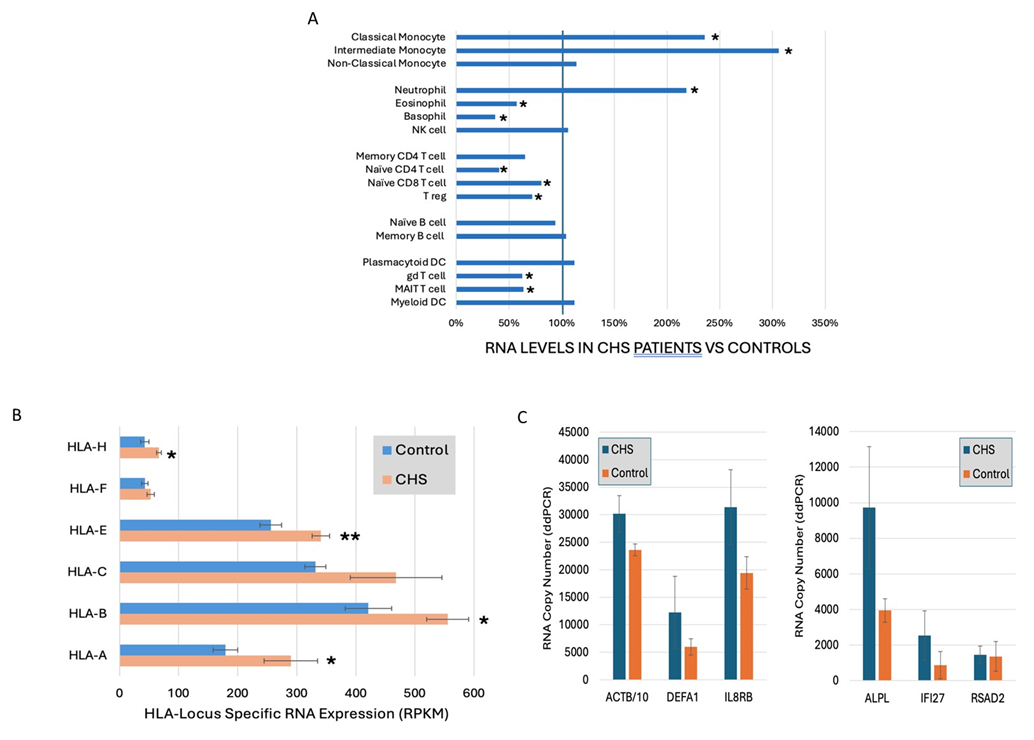Cannabinoid Hyperemesis Syndrome (CHS) is a condition that causes repeated, severe vomiting in some people who use cannabis regularly.
It’s becoming more common, but doctors often struggle to diagnose it because its symptoms mimic other illnesses. Today, CHS is diagnosed by
ruling out other causes—often leading to delays and unnecessary treatments.
To overcome this unmet need, researchers at The George Washington University have developed the first blood-based diagnostic test for CHS. This innovative test identifies unique immune and genetic patterns found only in CHS patients, offering a fast, reliable, and non-invasive way to confirm diagnosis. The test analyzes a small blood sample to measure the activity of a curated panel of transcripts [IGKV2D-29, DEFA1, IFI27, TRAJ8, TRBJ1-4, MS4A2] linked to immune response. It then calculates a score. A score below 0.20 suggests the person likely does not have CHS and a value above 0.50 indicates a positive result, suggesting CHS is likely.
The test also looks at certain genetic markers (HLA alleles) that appear more often in people with CHS, such as overrepresentation of Class II alleles—particularly DPA102 and DRB103*—in CHS patients, suggesting a heritable immunogenetic component helping identify those at higher risk and allowing for personalized care.

Figure 1:(A) Immune Cell-Type and RNA Expression in CHS Patients. CHS patients show elevated transcripts in innate immune cells (neutrophils, monocytes) and suppressed signals in adaptive lymphocytes (T and B cells). Expression is shown relative to controls (% of control mean). Asterisks (*) indicate statistically significant changes (p < 0.05). (B) HLA-Locus RNA Expression via Transcript Realignment Expression levels of Class I HLA isotypes measured from RNAseq data. CHS patients exhibit significantly increased HLA-B, HLA-E, and HLA-H transcripts. Values shown in RPKM (Reads Per Kilobase of transcript Per Million) units with Standard Error of Mean (SEM); *p < 0.05 significance. (C) Digital PCR validation of immune-related transcripts in CHS. The same RNA used for RNAseq was analyzed by droplet digital PCR for selected immune transcripts.
Advantages:
-
First of its kind blood-based diagnostic test for CHS
-
Simple blood test without a need for invasive procedures
-
Compatible with standard lab workflows
-
Faster, more accurate diagnosis than current methods
-
Supports personalized care through immune and genetic risk profiling
Applications:
-
Emergency and urgent care centers for rapid diagnosis
-
Clinics treating patients with unexplained vomiting
-
Screening and risk assessment tool for unexplained vomiting and frequent cannabis users
-
Stratification for CHS-focused therapeutic trials